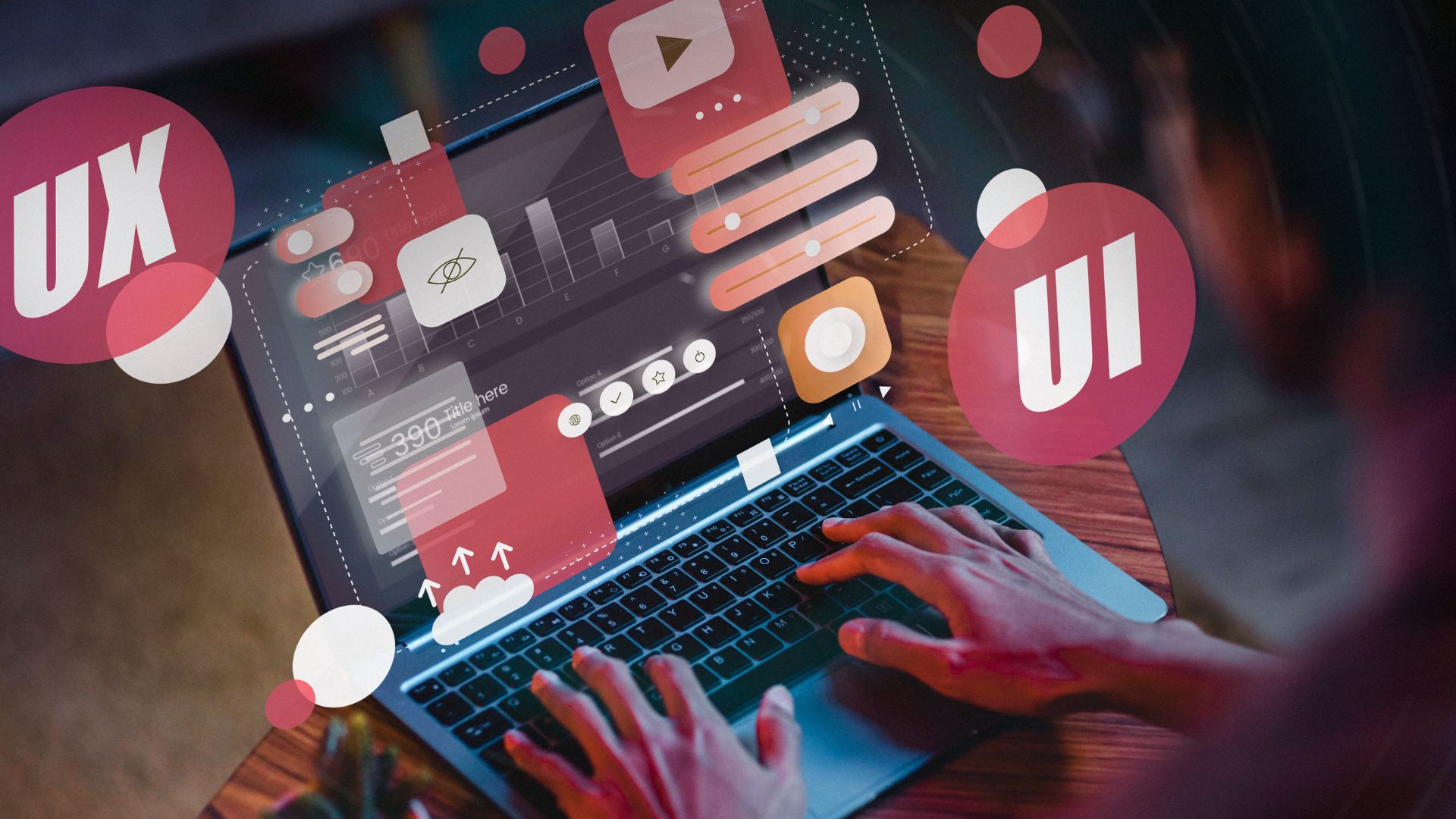
In the fast-paced world of digital design, the year 2024 promises to be a pivotal moment marked by groundbreaking innovations and transformative trends. As businesses navigate the ever-evolving landscape of online presence, understanding and leveraging the emerging web design trends is not just advantageous, but crucial for maintaining relevance and competitive edge. The comprehensive guide to website design trends for 2024 serves as a beacon, illuminating the path forward amidst the dynamic shifts in user preferences, technological advancements, and industry standards.
At the forefront of these trends is the continued dominance of minimalist design, characterized by clean aesthetics, intuitive navigation, and emphasis on essential elements. This approach not only enhances user experience by reducing clutter and distractions but also reflects a timeless elegance that resonates with modern consumers.
Augmented reality (AR) integration emerges as a game-changer, revolutionizing the way users interact with online content by seamlessly blending digital and real-world experiences. From immersive product demonstrations to interactive storytelling, AR technology offers boundless opportunities for engagement and brand differentiation.
Voice user interfaces (VUIs) are poised to revolutionize web interactions, as voice search and virtual assistants become increasingly ubiquitous in our daily lives. Websites optimized for voice navigation and natural language processing stand to gain a competitive edge in catering to the needs of a diverse user base and fostering accessibility.
Interactive storytelling takes center stage as brands seek to forge deeper connections with their audience through compelling narratives and engaging multimedia content. Leveraging animations, parallax scrolling, and dynamic visuals, web designers can captivate users’ attention and evoke emotional responses that drive engagement and brand loyalty.
Sustainability and eco-friendly design principles gain momentum, reflecting consumers’ growing awareness and demand for environmentally conscious practices. By adopting sustainable design practices, businesses not only reduce their carbon footprint but also enhance brand credibility and resonate with eco-conscious consumers.
Personalization remains paramount in delivering tailored user experiences that cater to individual preferences and behaviors. Leveraging data analytics and AI-driven algorithms, web designers can deliver personalized content and recommendations that resonate with users on a personal level, driving engagement and conversions.
As mobile usage continues to surge, a mobile-first approach becomes imperative for effective web design. By prioritizing responsive layouts, optimizing loading times, and ensuring seamless functionality across devices, businesses can cater to the growing mobile audience and deliver optimal user experiences regardless of the platform.
Data-driven design strategies empower businesses to make informed decisions and optimize user interactions based on actionable insights. By conducting user research, gathering feedback, and analyzing metrics, web designers can iteratively refine their designs to meet the evolving needs and preferences of their target audience.
In conclusion, embracing the future of web design in 2024 is not merely about staying current with the latest trends but about embracing innovation, prioritizing user-centricity, and leveraging cutting-edge technologies to create immersive digital experiences that resonate with audiences and drive success in the dynamic digital landscape. As businesses navigate the complexities of the online sphere, the comprehensive guide to website design trends serves as a roadmap, guiding them towards success in the ever-evolving world of digital design.
Website Design Trends to Watch Out For in 2024
In the rapidly evolving realm of web design, 2024 promises to be a year of unprecedented innovation and transformation. As businesses navigate the ever-changing digital landscape, staying ahead of the curve is paramount to maintaining relevance and engaging audiences effectively. The upcoming year is poised to witness a convergence of technological advancements, aesthetic preferences, and user-centric design principles, reshaping the way we interact with and experience websites. From minimalist design dominance to the integration of cutting-edge technologies like augmented reality (AR) and voice user interfaces (VUIs), the stage is set for a revolution in digital aesthetics and functionality.
Furthermore, the emphasis on sustainability and eco-friendly practices underscores the growing importance of corporate social responsibility in web design. As brands strive to create immersive and personalized experiences, data-driven strategies will play a pivotal role in shaping design decisions and optimizing user interactions. Amidst these transformative shifts, the mobile-first approach remains non-negotiable, as the proliferation of mobile devices continues to redefine user expectations and behaviors.
Ultimately, embracing the future of web design in 2024 entails a commitment to innovation, adaptability, and user-centricity, empowering brands to forge meaningful connections with their audiences and thrive in an increasingly competitive digital landscape.
Table of Contents
Minimalist Design Dominance
Minimalist design dominance in the realm of web design reflects a profound shift towards simplicity, elegance, and functionality. It’s not merely a trend but a philosophy that champions the notion of “less is more.” In essence, minimalist design seeks to strip away the unnecessary clutter, leaving behind only the essential elements that serve a purpose.
This approach fosters a clean and intuitive user experience, where users can effortlessly navigate through a website without distraction or confusion. By embracing minimalist principles, web designers can create visually appealing layouts with ample white space, crisp typography, and restrained use of color. This aesthetic not only enhances readability and visual hierarchy but also conveys a sense of sophistication and professionalism.
Moreover, minimalist design lends itself well to responsive and mobile-friendly layouts, ensuring seamless usability across devices. Beyond aesthetics, minimalist design reflects a mindset of efficiency and effectiveness, where every element serves a specific function and contributes to the overall user experience. In an age inundated with information overload, minimalist design offers a breath of fresh air, allowing users to focus on what truly matters and engage with content in a meaningful way.
As we navigate the digital landscape of 2024 and beyond, embracing minimalist design dominance will continue to be a hallmark of successful web design, elevating user experiences and driving business objectives with elegance and clarity.
Augmented Reality Integration
Augmented Reality (AR) integration represents a paradigm shift in the realm of web design, transcending traditional boundaries to offer users unprecedented levels of immersion and interaction. By overlaying digital elements onto the real world, AR technology has the potential to revolutionize how users engage with websites, products, and brands. From interactive product demonstrations to virtual try-on experiences, AR opens up a myriad of possibilities for enhancing user engagement and driving conversions. Imagine a furniture retailer allowing customers to visualize how a couch would look in their living room before making a purchase or a cosmetics brand enabling users to virtually try on different makeup shades.
These immersive experiences not only captivate attention but also instill confidence in purchasing decisions. Moreover, AR integration goes beyond mere novelty, serving as a powerful tool for storytelling and brand differentiation. By leveraging AR to create memorable and meaningful interactions, brands can forge deeper connections with their audience and establish themselves as pioneers in the digital landscape. However, successful AR implementation requires careful consideration of technical feasibility, user experience design, and content strategy.
From optimizing AR content for various devices and platforms to ensuring seamless integration with existing web interfaces, every aspect must be meticulously planned and executed. Additionally, ongoing innovation and advancements in AR technology will continue to shape the possibilities and potential of AR integration in web design. As we navigate the future of web design in 2024 and beyond, embracing AR as a transformative force promises to elevate user experiences, redefine brand engagement, and propel the digital ecosystem into uncharted territories of creativity and innovation.
Voice User Interface (VUI) Adoption
Voice User Interface (VUI) Adoption is a pivotal aspect of modern web design, heralding a paradigm shift in how users interact with digital platforms. With the proliferation of voice-enabled devices and the increasing integration of virtual assistants into everyday life, VUIs have emerged as a transformative force in user experience (UX) design. By enabling users to navigate websites, perform tasks, and access information through natural language commands, VUIs offer unparalleled convenience, accessibility, and efficiency. From voice search functionality to voice-controlled navigation, the possibilities for VUI implementation are vast and varied.
Moreover, as voice recognition technology continues to advance, VUIs are becoming increasingly sophisticated, capable of understanding context, recognizing accents, and adapting to user preferences. Businesses that embrace VUI adoption stand to benefit from enhanced user engagement, improved accessibility for individuals with disabilities, and greater differentiation in a crowded digital landscape.
However, successful VUI integration requires careful consideration of factors such as language nuances, user intent, and privacy concerns. By prioritizing user-centric design principles, conducting thorough usability testing, and staying abreast of evolving voice technology trends, businesses can leverage VUIs to elevate the user experience, foster brand loyalty, and drive meaningful interactions in an increasingly voice-first world.
Interactive Storytelling Elements
Interactive storytelling elements represent a pivotal evolution in the realm of web design, transcending traditional static content to engage users on a deeper, more immersive level. With the digital landscape becoming increasingly saturated, brands are leveraging interactive storytelling to differentiate themselves and forge meaningful connections with their audience. These elements encompass a myriad of techniques, including animations, parallax scrolling, gamification, and multimedia content, all aimed at captivating users and guiding them through a narrative journey. By infusing websites with interactive elements, brands can transform passive browsing into an interactive experience, where users actively participate in shaping the narrative.
This not only enhances user engagement but also fosters emotional resonance, as users become invested in the story unfolding before them. From interactive product demos that showcase functionality in real-time to gamified experiences that incentivize exploration, the possibilities are limitless. Moreover, interactive storytelling transcends boundaries of language and culture, enabling brands to connect with diverse audiences on a universal level.
By harnessing the power of storytelling in conjunction with interactive design, brands can create memorable experiences that leave a lasting impression and drive conversions. In essence, interactive storytelling represents the convergence of technology and narrative, offering a powerful tool for brands to captivate, educate, and inspire their audience in the digital age.
Sustainability and Eco-friendly Designs
In recent years, the imperative for sustainability has become increasingly pronounced across various industries, including web design. As the global community grapples with the urgent need to address climate change and environmental degradation, businesses are recognizing the pivotal role they play in fostering a more sustainable future. In the realm of web design, this translates into a concerted effort to minimize ecological footprint and promote eco-friendly practices. Sustainable web design entails a multifaceted approach that encompasses various aspects of website development and operation.
From optimizing energy consumption and reducing carbon emissions to minimizing electronic waste and promoting ethical sourcing, there are numerous ways in which designers can contribute to environmental stewardship. This entails adopting strategies such as optimizing website performance to reduce energy consumption, utilizing renewable energy sources for hosting servers, and employing efficient coding practices to streamline website functionality.
Additionally, designers can prioritize the use of eco-friendly materials and resources, adhere to sustainable design principles such as minimalism and scalability, and advocate for environmental initiatives within their organizations and communities. By embracing sustainability in web design, businesses not only mitigate their environmental impact but also enhance their brand reputation, attract eco-conscious consumers, and contribute to a more sustainable future for generations to come.
Enhanced Personalization Techniques
Enhanced Personalization Techniques in web design are becoming increasingly crucial in today’s digital landscape. With consumers expecting tailored experiences that cater to their individual preferences and needs, personalization has evolved from a mere trend to a fundamental aspect of effective web design strategy. By leveraging advanced data analytics, artificial intelligence, and machine learning algorithms, businesses can gain profound insights into user behavior, preferences, and demographics. This rich data enables them to deliver hyper-targeted content, product recommendations, and personalized user journeys that resonate with each individual visitor.
One of the key aspects of enhanced personalization is the ability to create dynamic, adaptive website experiences that evolve in real-time based on user interactions. By tracking user behavior and engagement metrics, web designers can dynamically adjust content, layout, and calls-to-action to optimize conversions and user satisfaction. This level of customization not only enhances user experience but also fosters brand loyalty and increases engagement metrics such as time spent on site and conversion rates.
Moreover, enhanced personalization techniques extend beyond just website content to encompass various touchpoints across the user journey. From personalized email campaigns and targeted advertising to customized product recommendations and interactive chatbots, businesses can create cohesive, personalized experiences that seamlessly transition across different channels and devices. This omnichannel approach ensures consistency and relevance throughout the customer lifecycle, driving engagement and loyalty across multiple touchpoints.
Furthermore, enhanced personalization techniques empower businesses to anticipate user needs and proactively address pain points, leading to more meaningful interactions and higher levels of customer satisfaction. By leveraging predictive analytics and user segmentation, businesses can identify patterns and trends to predict future behavior and deliver preemptive solutions and recommendations. This proactive approach not only enhances user experience but also increases brand trust and loyalty, as users feel understood and valued by the brand.
In summary, enhanced personalization techniques are revolutionizing web design by enabling businesses to create tailored, adaptive experiences that resonate with individual users on a deeper level. By leveraging data-driven insights and advanced technologies, businesses can deliver personalized content, recommendations, and interactions that enhance user engagement, drive conversions, and foster long-term relationships with their audience. As personalization continues to evolve, it will undoubtedly remain a cornerstone of effective web design strategy in the years to come.
Mobile-First Approach Continues
The Mobile-First Approach Continues to be a cornerstone of modern web design, driven by the undeniable dominance of mobile devices in today’s digital landscape. With an ever-increasing number of users accessing the internet through smartphones and tablets, prioritizing mobile optimization is no longer a luxury but a necessity.
This approach entails designing and developing websites with the mobile user experience as the primary focus, ensuring that content is easily accessible, navigation is intuitive, and functionality remains seamless across a myriad of screen sizes and resolutions. By adopting a Mobile-First strategy, businesses can cater to the needs and preferences of their mobile audience, delivering a consistent and engaging browsing experience that enhances user satisfaction and drives conversions.
Moreover, search engines like Google have shifted towards mobile-first indexing, meaning that they prioritize the mobile version of a website’s content for indexing and ranking in search results. Thus, embracing the Mobile-First Approach is not only essential for meeting user expectations but also for maintaining visibility and competitiveness in the digital realm.
To effectively implement this strategy, web designers must leverage responsive design principles, optimize performance for mobile devices, and prioritize mobile-friendly features and functionalities. By doing so, they can ensure that their websites remain accessible, engaging, and impactful across the diverse spectrum of mobile devices, empowering businesses to thrive in an increasingly mobile-centric world.
Data-Driven Design Strategies
Data-driven design strategies leverage insights gleaned from user data to inform and optimize the design process. By analyzing user behavior, preferences, and interactions, designers can make informed decisions that enhance the effectiveness and usability of websites. This approach involves collecting and analyzing data through various methods such as user surveys, heatmaps, A/B testing, and analytics tools. By understanding how users navigate and interact with the website, designers can identify pain points, areas for improvement, and opportunities for innovation.
Data-driven design strategies also enable iterative refinement, allowing designers to continuously optimize and enhance the user experience based on real-time feedback. Moreover, by incorporating data into the design process, businesses can make more informed decisions, mitigate risks, and achieve better outcomes. Ultimately, data-driven design empowers designers to create websites that not only meet the needs and expectations of users but also drive measurable results for the business.
Conclusion: Embrace the Future of Web Design

In conclusion, the future of web design beckons with boundless opportunities for innovation and creativity. Embracing the evolving landscape of digital design isn’t just about staying abreast of the latest trends; it’s about envisioning and shaping the user experiences of tomorrow. By adopting a forward-thinking mindset, businesses can position themselves at the forefront of technological advancements, captivating audiences and setting new standards for excellence in user interface and experience.
The convergence of emerging technologies such as augmented reality, voice user interfaces, and data-driven personalization presents a fertile ground for experimentation and exploration. Moreover, the emphasis on sustainability and eco-friendly designs underscores a growing awareness of the environmental impact of digital initiatives, urging designers to incorporate ethical considerations into their creative processes.
At its core, the future of web design is about human-centered design principles that prioritize accessibility, inclusivity, and empathy. It’s about understanding the diverse needs and preferences of users and crafting experiences that resonate deeply with them. As we venture into 2024 and beyond, the journey towards innovation and excellence in web design is a collaborative endeavor, fueled by curiosity, experimentation, and a relentless pursuit of perfection.
By embracing change, challenging conventions, and pushing the boundaries of possibility, we can chart a course towards a digital future that is not only aesthetically captivating but also enriching, empowering, and ultimately transformative for users around the globe. So let us embrace the future of web design with open minds and open hearts, ready to embark on an exhilarating journey of creativity, discovery, and endless possibilities.
FAQs About Website Design Trends to Watch Out For in 2024
1. How often should I update my website design to stay current with trends?
- It’s advisable to conduct regular reviews of your website design to identify areas for improvement and incorporate new trends as they emerge. However, the frequency of updates may vary depending on your industry, target audience, and business objectives.
2. Are minimalist designs suitable for all types of websites?
- While minimalist designs can work well for many websites, it’s essential to consider your brand identity, target audience, and content requirements before adopting a minimalist approach. Sometimes, a more visually rich design may better align with your brand personality and objectives.
3. How can I make my website more accessible to users with disabilities?
- To improve accessibility, consider implementing features such as alternative text for images, keyboard navigation, resizable text, and color-contrast options. Conducting regular accessibility audits and seeking feedback from users with disabilities can also help identify areas for improvement.
4. What are some examples of sustainable web design practices?
- Sustainable web design practices include using renewable energy to power servers, optimizing website performance to reduce energy consumption, and minimizing the use of resource-intensive design elements such as large images and videos. Additionally, choosing hosting providers with green energy initiatives can further reduce environmental impact.
5. How can AI enhance the user experience on my website?
- AI can enhance the user experience by analyzing user behavior, personalizing content recommendations, automating customer support through chatbots, and optimizing website performance based on real-time data insights. By leveraging AI technologies, businesses can deliver more relevant, engaging, and seamless experiences for their users.


